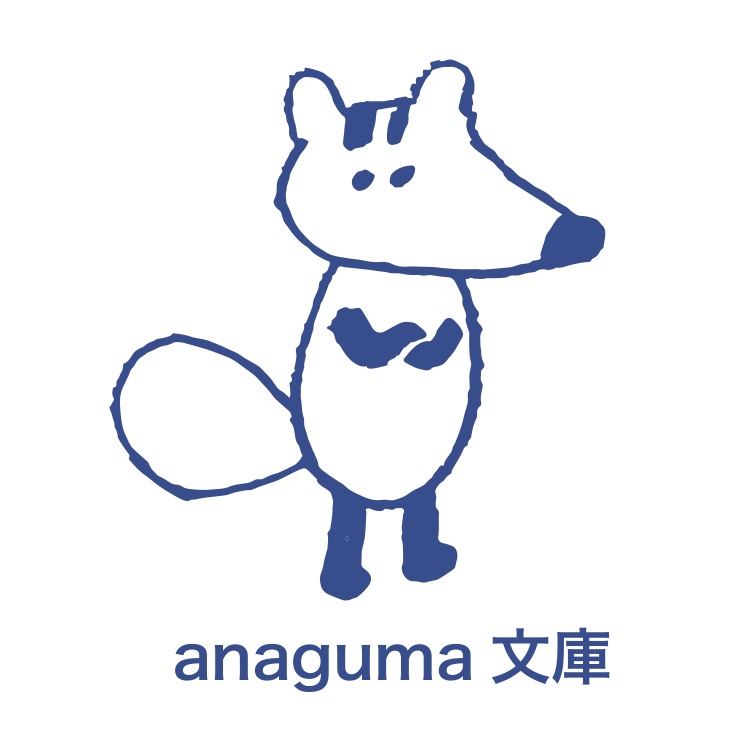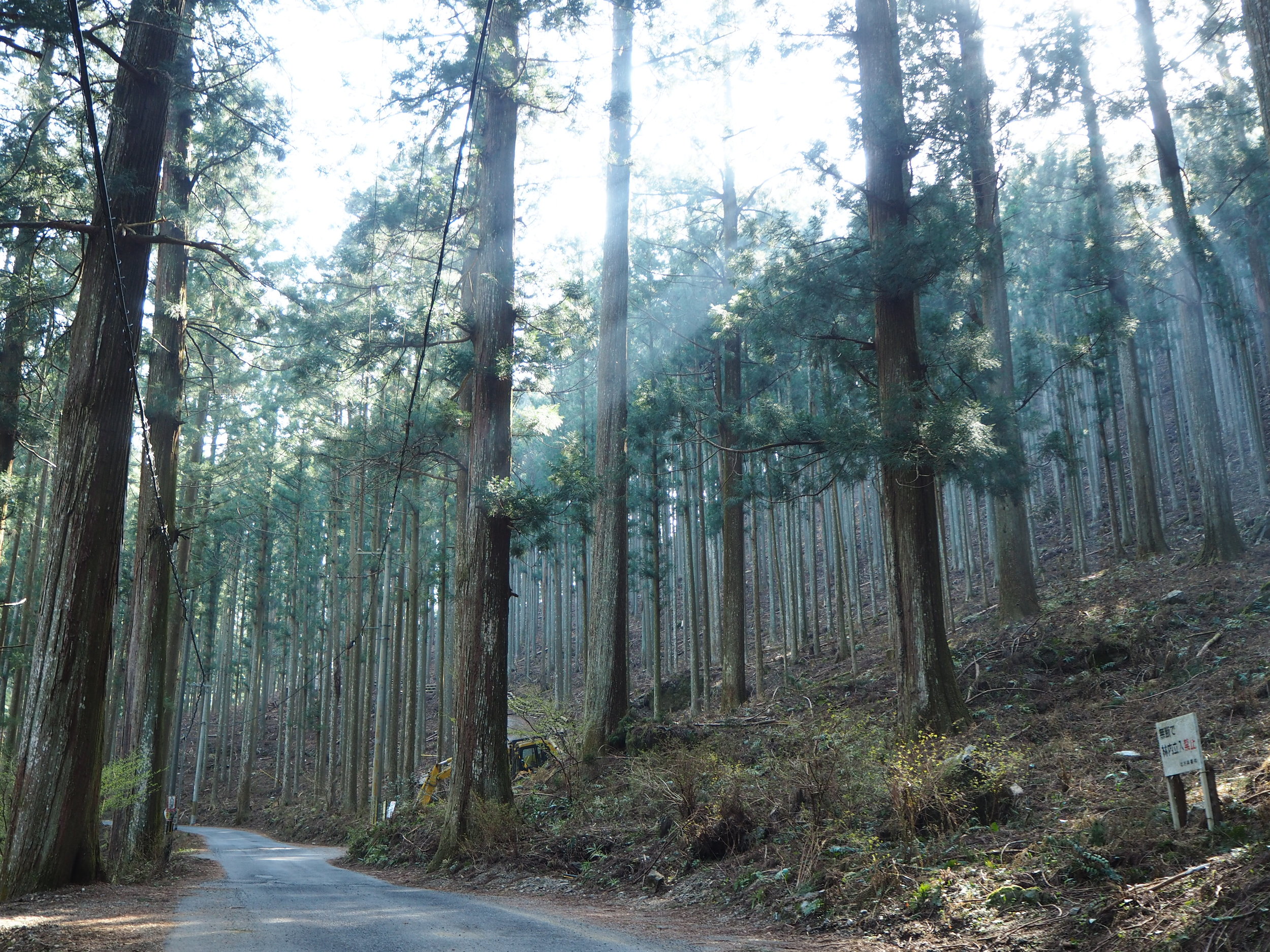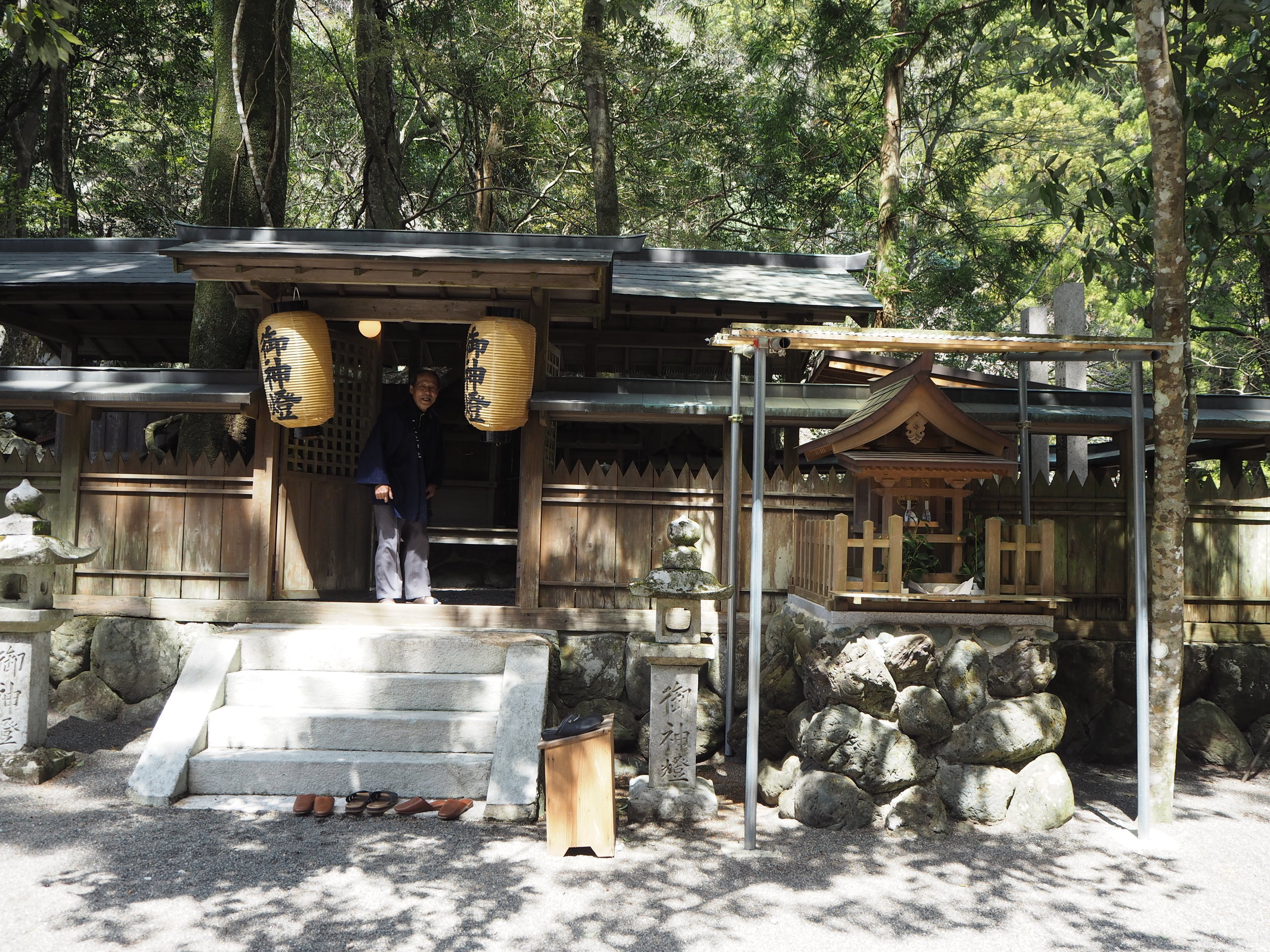(Please scroll down for the English version.)
神社で春が始まる
永遠に葛折りしそうな中奥川に沿って県道258号線を慎重に進んだ。車一台しか通れない幅について何も考えないふりをして、道の状況とどこまでバックすればいいかを覚えようとした。道が広くなり、待望の深呼吸ができた時、中奥の十二社神社に着いた。
瀬戸・枌尾・中奥のみなさんは十二社神社で春(四月)、夏(六月)、秋(十月)、冬(十二月)にお祭りをする。大きな木が本殿の上へ高くそびえる。その右に小さな神社と末社が並んでいる。僕は手水舎から上がり、仲間について行きながらその神社を順番に回り、参拝した。中奥川の流れの上に、大人の会話、子供の笑い、じゃりの足音が聞こえた。僕はいつもお世話になっている顔をたくさん見て、できるだけ挨拶したかった。やまいき市の生産者と常連さん、ヨーガの先生、話の面白いおじさんなどに普段と違う環境で会い、別の面が見えたような気がした。
お神酒とオードブルが出て、男性同士と女性同士の会話が続いた。落ち着かない子供達はじゃりの上を走り回り、さらに盛り上がった。お餅が一人一人に配られた時から、みなさんはだんだん本殿の前の陽光に集まった。僕は周辺からこれからの行事を見ることにした。白くて小さな餅が何個も上を飛び、境内の木の前に綺麗な曲線を描き、みなさんの方へ落ちた。「待ちに待った餅まきが始まった!」と言わんばかりに、みなさんは声をあげ、じゃりに落ちた餅を慌てて集めた。周辺までお餅がなかなか飛ばないと思いきや、一個がみなさんの頭を超え、近くに落ちそうであった。僕は一歩前へ少ししゃがんで、左手で受け取った。お祭りが午前中に終わり、お供え物が整理され、ドラム缶の火がだんだん消えた。十二社神社から車へ歩きながら、神社から中奥川までいく石階段があると初めて気づいた。
その夜、暖かく膨らんだお餅に醤油をかけて三個食べた。七時前から外の虫は鳴いて、次の朝まで続けそうであった。僕はテレビを点けずに、音楽を流さずに、その虫の声に耳をすませようとした。まだ暖かくて、暖房を点けるのを忘れた。今年の長くて寒い冬がバックミラーで綺麗に写っている。
Spring Starts at the Shrine
I carefully went up Pref. Road 258, along the ever-snaking Nakaoku River. I pretended not to think about the road wide enough for just one car, and kept a mental note of the conditions of the road and where I could back up. When the road widened and I was able to take the long-awaited deep breath, I had arrived at Junisha Shrine.
Every spring (April), summer (June), and autumn (October), the people of Seto, Sogio, and Nakaoku hold a festival at Junisha Shrine. Large trees tower high over the main shrine. Smaller shrine and sub-shrines are all lined up to the right. I walked up from the water basin and followed my buddy as we paid our respects to each shrine. I could hear adults’ conversations, children’s laughter, and footsteps on gravel over the flowing Nakaoku River. I saw a lot of faces I am indebted to, and wanted to say hello to as many people as possible. Seeing the growers and the regulars of Yamaiki-ichi, my yoga teacher, and the old man with good stories in a different environment than usual, I felt like I was able to see another side of them.
The holy sake and her d’oeuvres came out, and the conversations men and the conversations of women continued. Restless children ran around on the gravel, getting more and more excited. Mochi was passed out to people individually, and everyone gradually gathered in the sunshine in front of the main shrine. I decided to watch the proceeding events from the perimeter. Numerous small, white mochi flew up in the air, making a beautiful arc in front of the trees on the shrine grounds, and dropped down toward everyone. As if to say, “The long awaited mochimaki has begun!”, everyone cried out and rushed to gather the mochi that had fallen onto the gravel. Just when I thought that the mochi weren’t quite making it to where I was on the perimeter, one flew above everyone’s heads, and looked like it would fall near me. I took a step forward, squatted down, and caught it in my left hand. The festival finished before noon, the offerings were gathered, and the fire in the drum can gradually faded out. As I walked to my car from Junisha Shrine, I noticed for the first time that a set of stone steps leads from the shrine down to the Nakaoku River.
That night, I dressed the warm, expanded mochi in soy sauce and I ate three of them. The insects outside started buzzing before 7 p.m. and seemed like they could continue until morning. I didn’t turn on the television, didn’t play any music, and just tried to lay my ears to the voices of the bugs. It was still warm, and I forgot to turn on the heater. This year’s long, cold winter reflected beautifully in my rear-view mirror.





